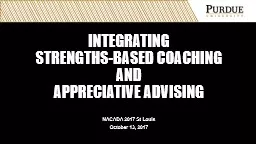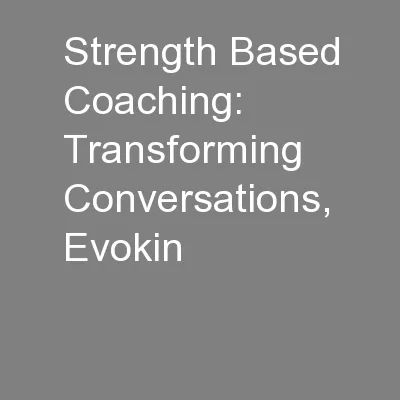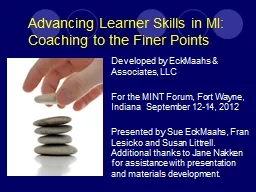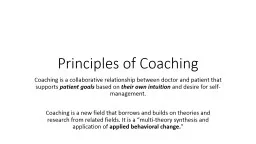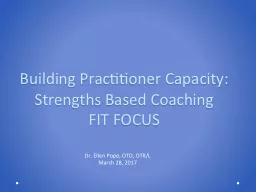PPT-Integrating strengths-based coaching
Author : liane-varnes | Published Date : 2018-09-23
and appreciative advising NACADA 2017 St Louis October 13 2017 Your presenters for today Colleen Brown Assistant Director Cara Wetzel Assistant Director Exploratory
Presentation Embed Code
Download Presentation
Download Presentation The PPT/PDF document "Integrating strengths-based coaching" is the property of its rightful owner. Permission is granted to download and print the materials on this website for personal, non-commercial use only, and to display it on your personal computer provided you do not modify the materials and that you retain all copyright notices contained in the materials. By downloading content from our website, you accept the terms of this agreement.
Integrating strengths-based coaching: Transcript
Download Rules Of Document
"Integrating strengths-based coaching"The content belongs to its owner. You may download and print it for personal use, without modification, and keep all copyright notices. By downloading, you agree to these terms.
Related Documents

